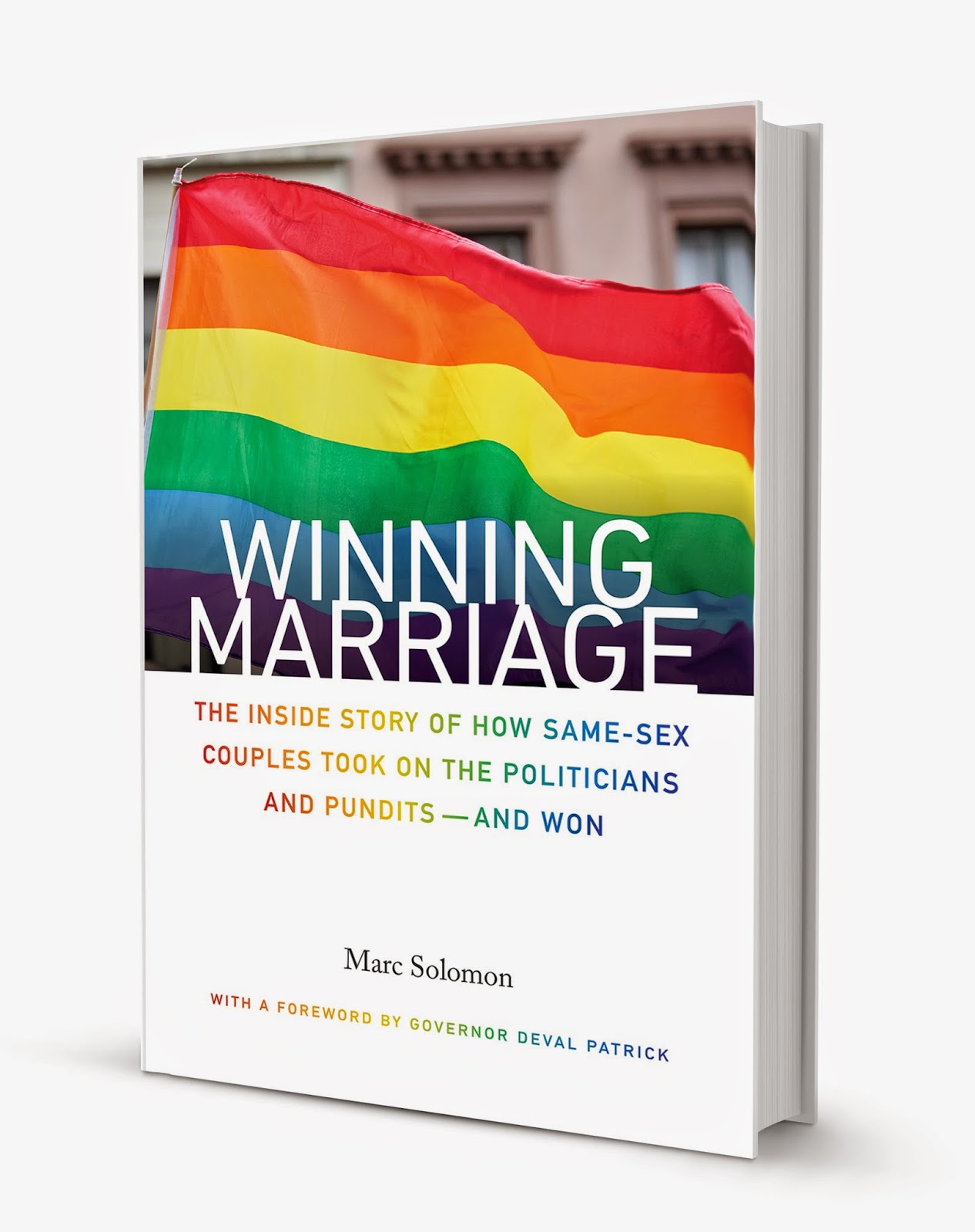 |
| Newly married couples leaving City Hall in Seattle in 2012, by Dennis Bratland |
It's a rare thing to publish a book whose ending hasn't been written.
Maybe rarer when that book, released last November, lands scores of soaring reviews, including a spot on Slate's list of the best of 2014.
We're talking about the definitive—and dramatically unfinished—history of the marriage equality movement. Winning Marriage: The Inside Story of How Same-Sex Couples Took on the Politicians and the Pundits—and Won, written by Marc Solomon, national campaign director for Freedom to Marry, is the state-by-state chronicle of Solomon's tireless work on the front lines of the battle to ensure that all people have the right to marry anyone they choose.
Publishers Weekly calls the book "a manual for how to craft a successful political movement in the future."
Slate's Mark Joseph Stern says it's "the book that leaders of the movement deserve, and that latecomers to the movement need to read...[and it is] the only account of the gay rights battle yet written that will still be read in decades to come. It's the timeless story of a fierce and vital fight, fast-paced and marvelously detailed."
Writing for the Huffington Post, Julie Enszer is impressed with Solomon's "commitment to recognizing multiple people—activists, lobbyists, and just plain interested citizens—and their role in the struggle for marriage equality. In Solomon's hands, the story of marriage equality is multi-vocal, even cacophonous, with an array of people working with commitment to achieve the goal."
This is what Freedom to Marry's national map looks like today, after state after state began allowing same-sex marriages as a result of last June's overturning of the Defense of Marriage Act:
Tomorrow, Friday, January 9, 2015, may present new milestones in the path toward that ultimate goal. In New Orleans, the 5th Circuit Court of Appeals will hear cases out of Texas, Louisiana, and Mississippi. Also tomorrow the Supreme Court will meet to consider taking up one of five marriage cases that could lead to a nationwide freedom to marry by June. With every hope for justice for all, tomorrow will be a momentous day.
And with any luck, by June 2015, Marc Solomon—and the untold scores of activists and organizers who have fought this fight for so long—can close the book on the hard-won story of marriage equality.




